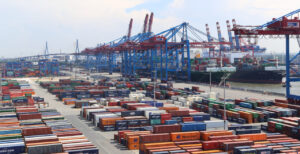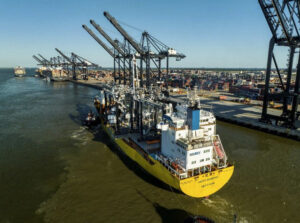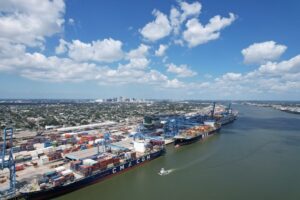The Port of London Authority (PLA) has achieved its target of cutting 50 per cent of carbon emissions by 2025 three years ahead of schedule, having achieved this feat in 2022.
The introduction of sustainable biofuel in place of diesel in PLA’s fleet of vessels as an interim measure was the key initial step in improving performance, according to the PLA.
The original PLA target was a 50 per cent reduction from the 2,054 tonnes of carbon emitted across its entire operations in its 2014 baseline year.
Vessel fuel consumption was responsible for more than 75 per cent of the PLA’s total carbon emissions before the switch to biofuel.
“We’re proud to have made this initial step using sustainable biofuels to reduce carbon emissions,” said PLA CEO Robin Mortimer.
“This interim measure is bringing emissions down, while we explore the long-term solution, using alternative fuels.”
READ: Port of London Authority to build on growing power demand in new green study
The PLA, which oversees safe operations in the UK’s busiest port, has committed to achieve Net Zero by 2040, or earlier.
The PLA operates more than 20 vessels, including harbour service launches, driftwood collectors, hydrographic survey vessels and a large mooring maintenance craft.
The PLA has invested more than £120,000 ($143,729) in new steel fuel tanks to store biofuel at three of its bases along the river.
The most recent tank installation was completed at Barrier Gardens Pier in late 2022.
This installation was part of a bigger project that included a pier extension enabling the largest vessel in the fleet, LONDON TITAN, to moor there.
The pier was fitted with shore power as part of the development work so that the vessel can operate essential electrical systems when moored without using its engines to generate power.
The use of biofuel, hydrogenated vegetable oil (HVO), reduces greenhouse gas emissions as the carbon dioxide emitted during combustion is offset by the absorption of carbon dioxide during the growth of the biomass that forms the biofuel.
HVO has also been shown to cut emissions of nitrogen dioxide and particulates.
This record announcement comes more than a month after the PLA started a master planning exercise to realise the growth opportunities along the Thames known as the Thames Vision 2050.









